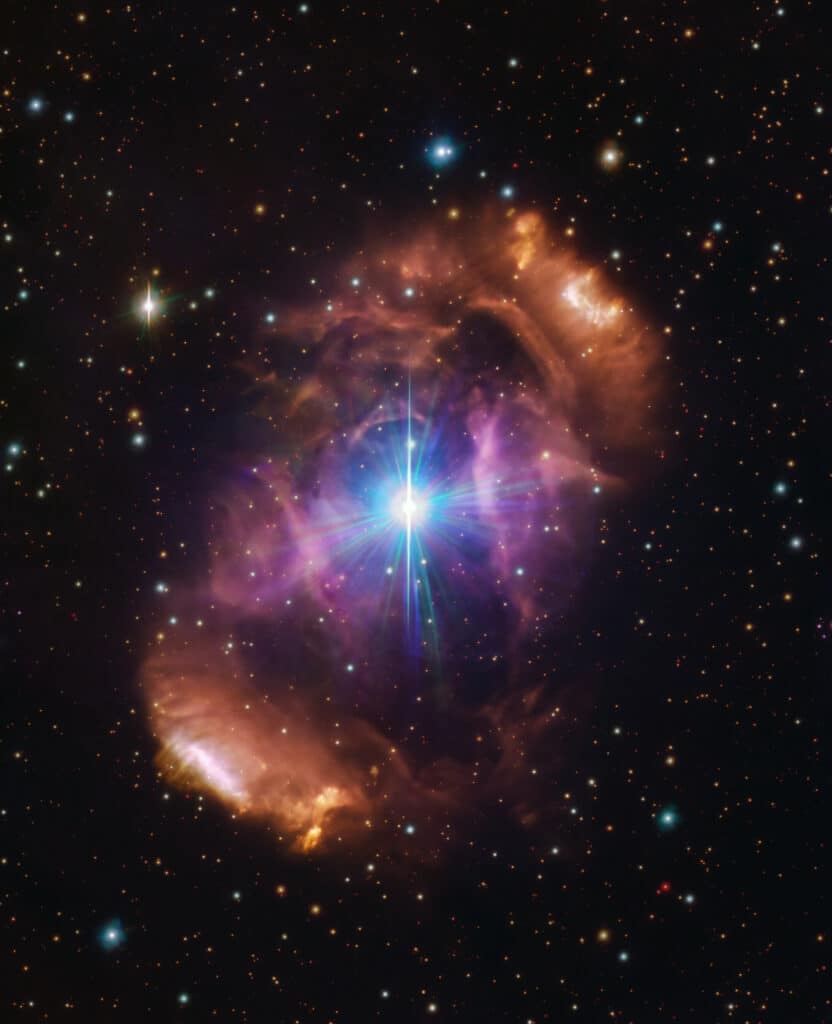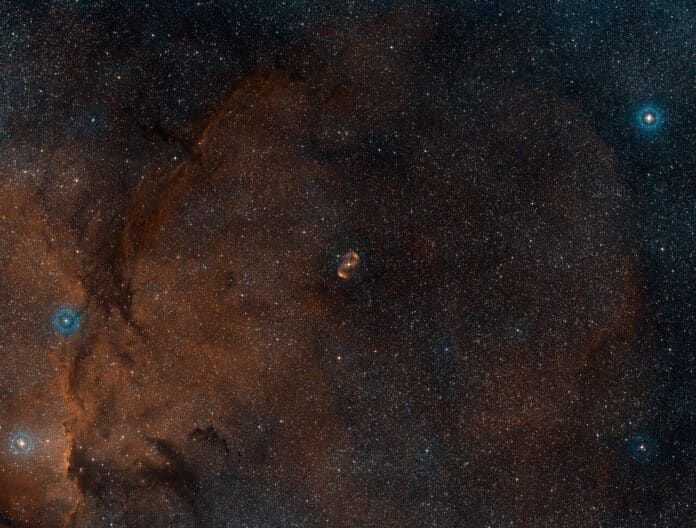A pair of stars in the Norma constellation located about 3800 light-years away from Earth have been found to be very different from each other. One of them is younger and magnetic, unlike the other, which is very unusual for star pairs that are typically like twins. The European Southern Observatory (ESO) has now revealed that there may have been three stars in the system originally until two of them collided and merged, creating a beautiful cloud of gas and dust.
The system, HD 148937, was studied by a team of astronomers from ESO and KU Leuven in Belgium, led by Abigail Frost. The team analyzed nine years’ worth of data from ESO’s Very Large Telescope Interferometer and archival data from ESO’s La Silla Observatory.
They found that two of the stars in the system had merged to create a magnetic star, which threw out some material, creating a nebula. The more distant star formed a new orbit with the newly merged star, creating today’s binary system.
The team also discovered that the age difference between the two stars suggests that the scenario of the two stars merging is the most plausible one. This merger scenario also explains why one of the stars in the system is magnetic while the other is not.

Magnetic fields are typically found in low-mass stars like our Sun, but this discovery suggests that massive stars can acquire magnetic fields when two stars merge.
Thanks to the data from the PIONIER and GRAVITY instruments on ESO’s Very Large Telescope Interferometer, this rare event was observed soon after it happened. The team believes that ESO’s Extremely Large Telescope, currently under construction in the Chilean Atacama Desert, will enable them to study the system more thoroughly and reveal even more surprises.
The discovery helps solve a long-standing mystery in astronomy and provides direct evidence of how massive stars get their magnetic fields. Published in the journal Science, it has garnered much attention from the scientific community.
Journal Reference
- Frost, A. J., Sana, H., Mahy, L., Wade, G., Barron, J., Bouquin, B. L., Mérand, A., N. Schneider, F. R., Shenar, T., Barbá, R. H., Bowman, D. M., Fabry, M., Farhang, A., Marchant, P., Morrell, N. I., & Smoker, J. V. (2024). A magnetic massive star has experienced a stellar merger. Science. DOI: 10.1126/science.adg7700
